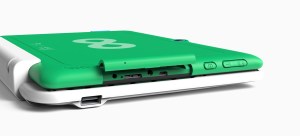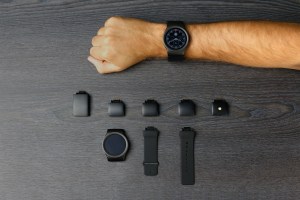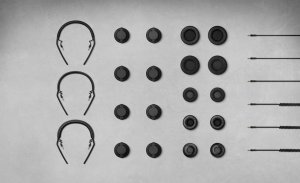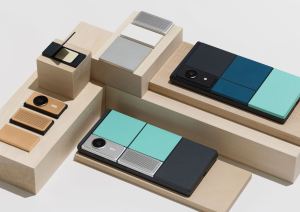It used to be the case for gadget lovers that you were pretty much stuck with what you got out of the box. If you wanted any upgrades or modifications, you would probably have to buy a new device altogether. What’s more, if an individual component such as an antenna or a display suddenly stopped working, you’d have to bring the entire device to the shop, leaving you gadgetless for days; not to mention, the cost of repairs may even exceed the purchase price of a brand-new device.
However, thanks to advances in modular design, in which manufacturers create open and adaptable platforms, all of that is about to change. Whether it’s snapping a professional-grade lens onto your smartphone or swapping out a broken screen, modular design lets you customize personal technology à la carte, unlocking a new frontier previously accessible to only DIYers and electronics hobbyists. We partnered with OtterBox to showcase the hottest gadgets in the modular tech space and how they’re rapidly changing the world of personal technology.
Infinity:One Laptop

Designed by One Education, an Australian offshoot of the One Laptop Per Child nonprofit, the Infinity:One represents the first step toward a fully modular laptop that can serve as an open platform to fit the diverse needs of a K-12 education. The Infinity:One breaks away from traditional laptops by combining detachable design with features you would ordinarily find on smartphones, which include a compass, a stylus, a gyroscope and a front-facing camera — all useful in teaching children a variety of skills such as drawing, photography and orienteering.
Depending on the success of the Infinity:One laptop, which is expected to start shipping in Australia in mid-August, One Education will likely move forward in developing its fully modular laptop. Though still in the conceptual stage, this product would feature fully swappable and reusable parts, significantly improving the adaptability of the device for specific learning tasks while also improving its lifespan. This could mean attaching different sensors to measure things like barometric pressure or temperature (think lessons about weather) or swapping out a screen and battery in seconds to bring an otherwise “dead” device back to life.
Blocks Smartwatch

Given the tech industry’s push toward wearables, it would only be a matter of time until modular design would make its way to your wrist. At first glance, Blocks resembles many of the smartwatches currently on the market, such as the Moto360 or the Fossil Q, with its round, touch-sensitive screen. However, what separates the Blocks smartwatch from the rest of the herd is its modular strap; it allows users to outfit the watch with new modules, which resemble the links you would find in a stainless steel watch band.
These add-ons include a flashlight, a secondary battery, a GPS sensor, a heart rate sensor, and even an “adventure” module that measures temperature, humidity and pressure. Each Blocks watch comes with four modules, with each extra module adding $35 on top of the $341 starting price. The first iteration of the Blocks smartwatch will launch in October with six modules to choose from, with indications that the company will release additional modules to complement the original lineup in the not-too-distant future.
OtterBox uniVERSE Case System

While mobile phone cases have been around for decades, the recent arrival of modular phone cases promises to make them more than decorative, protective shells. The OtterBox uniVERSE Case System is a phone case that doubles as a modular platform for a number of useful add-ons that lets users expand the functionality of their smartphones. These include useful day-to-day modules such as the snap-on wallet to keep all your cards in one place and the power pack, which boosts battery capacity by as much as 100 percent.
Developed as an open platform, the OtterBox uniVERSE Case System allows other mobile accessory makers to design and create highly specialized modules. Among these are a thermal camera, a portable speaker, and a chip reader that lets you swipe payment cards as well as accept contactless payment methods such as Apple Pay. There are more than a dozen different modules to choose from with more coming later this year, and they range from the $19.99 wallet add-on to $299 for the compact version of the thermal camera module. The OtterBox uniVERSE Case System itself retails for $49.95, comes in two colors and is available for purchase today.
AIAIAI TMA-2 Modular Headphones

The appeal of a modular headset may seem questionable at first, that is until you realize how much of an impact different listening environments can have on your playback experience. Building on the success of the original TMA-1 headset, AIAIAI, the Danish company behind the TMA-2 headphones, lets users customize their headset at the component level. Starting from the headband, users are able to pick out their favorite materials and sizes for each of the modules, which also include the cable and the earpads.
For real audiophiles, however, the most important modules to choose among will be the four speaker units; one of which includes a balanced speaker with a neutral soundstage, and another has titanium-coated drivers that produce a rich, bassy sound. There are 23 modules available for the TMA-2 headset, allowing users to build the ideal headphones for their usage profile, with the possibility of easily upgrading or repairing them down the line. The most affordable configuration runs $140, while the most expensive headset will set you back by $260, and you’ll be able to order yours today.
Google Project Ara

Perhaps the most ambitious modular concept to date, Google’s Ara smartphone seeks to break a decades-old paradigm of “closed architecture” phones, giving users the ability to build a smartphone that adapts to their needs. Encouraging the participation of third-party developers, the Ara “frame” itself contains most of the things you’d find in a typical smartphone — a CPU, GPU, antennas, sensors, a battery, a display — however, it still leaves plenty of room for modules that may easily be snapped on.
Considering how many outside developers are currently working with Google’s Android platform, it’s easy to imagine the breadth of companies that would be interested in developing a module for the Ara platform. These could include modules such as a GoPro camera for action shots, a snap-on projector for sharing video, an additional e-ink display to show secondary information, or maybe even a collapsible hand crank to charge the battery in the wilderness. While we’ll have to wait until 2017 to get our hands on a consumer version of the Ara; developers are expected to receive a dev kit as soon as this fall.
Modularity means not having to settle for what you get out of the box. Now that you know how modular design has helped bring the next wave of futuristic gadgets to life, choose the OtterBox uniVERSE Case System as your passport to explore the exciting new world of modular tech.